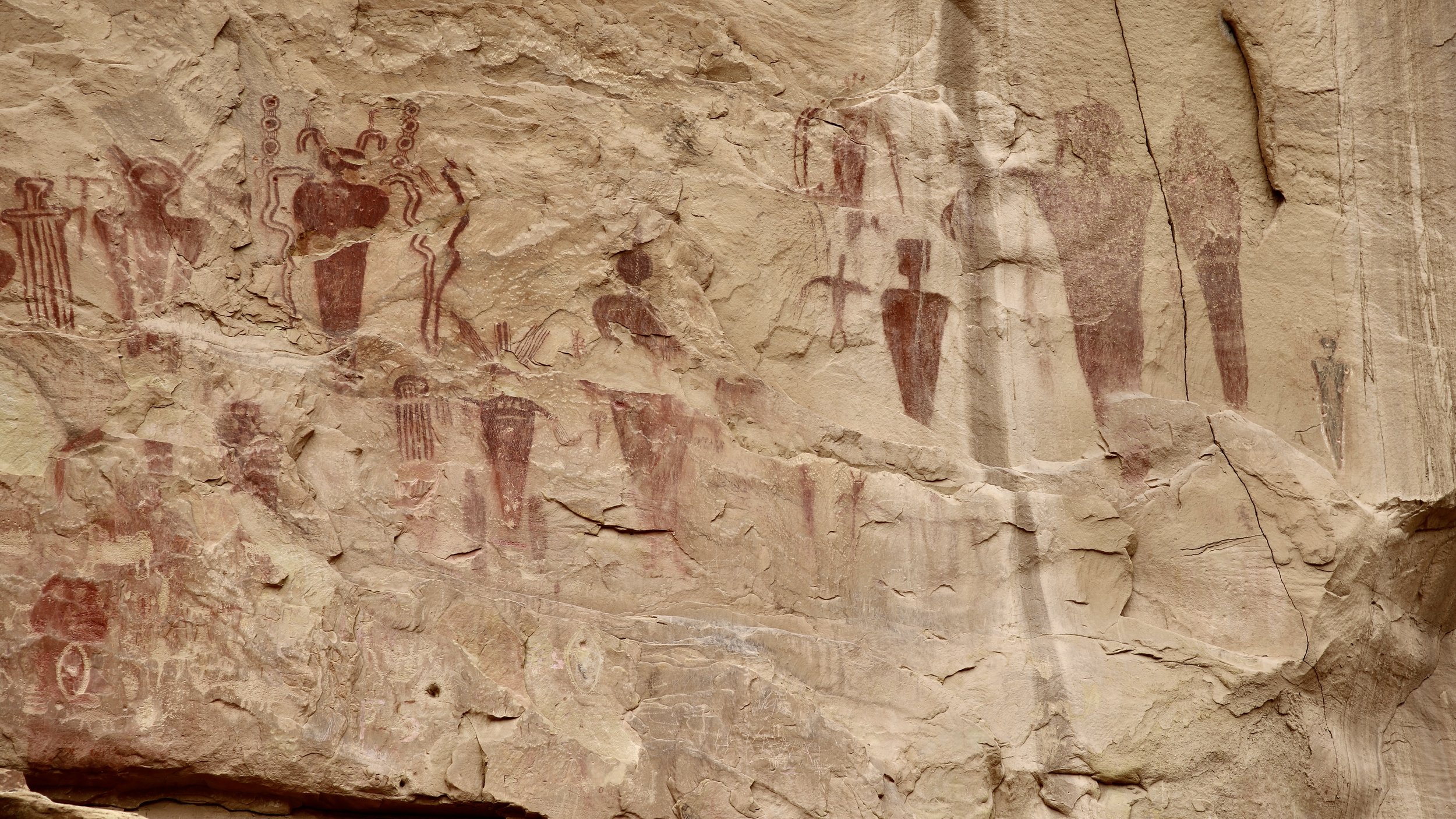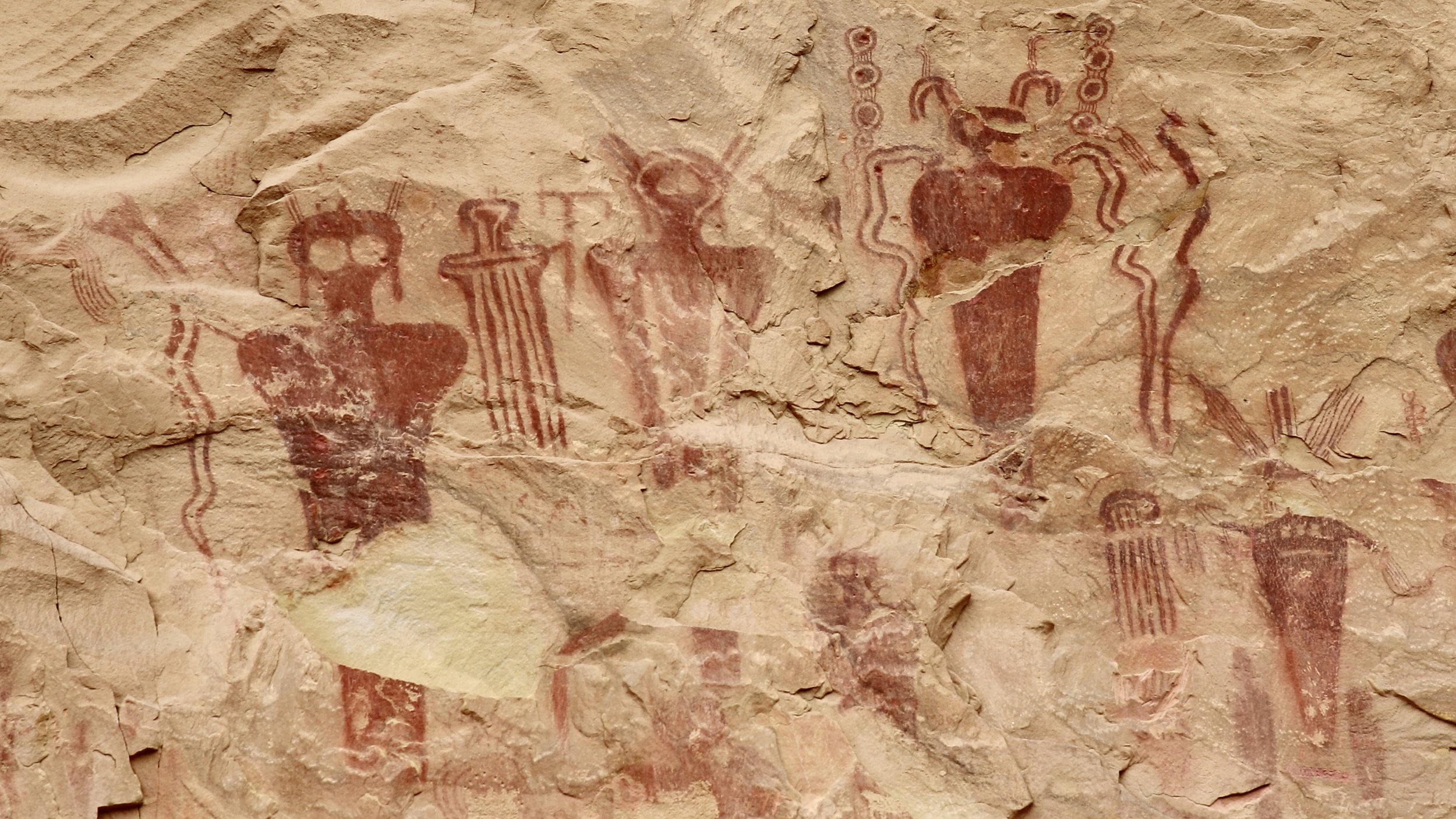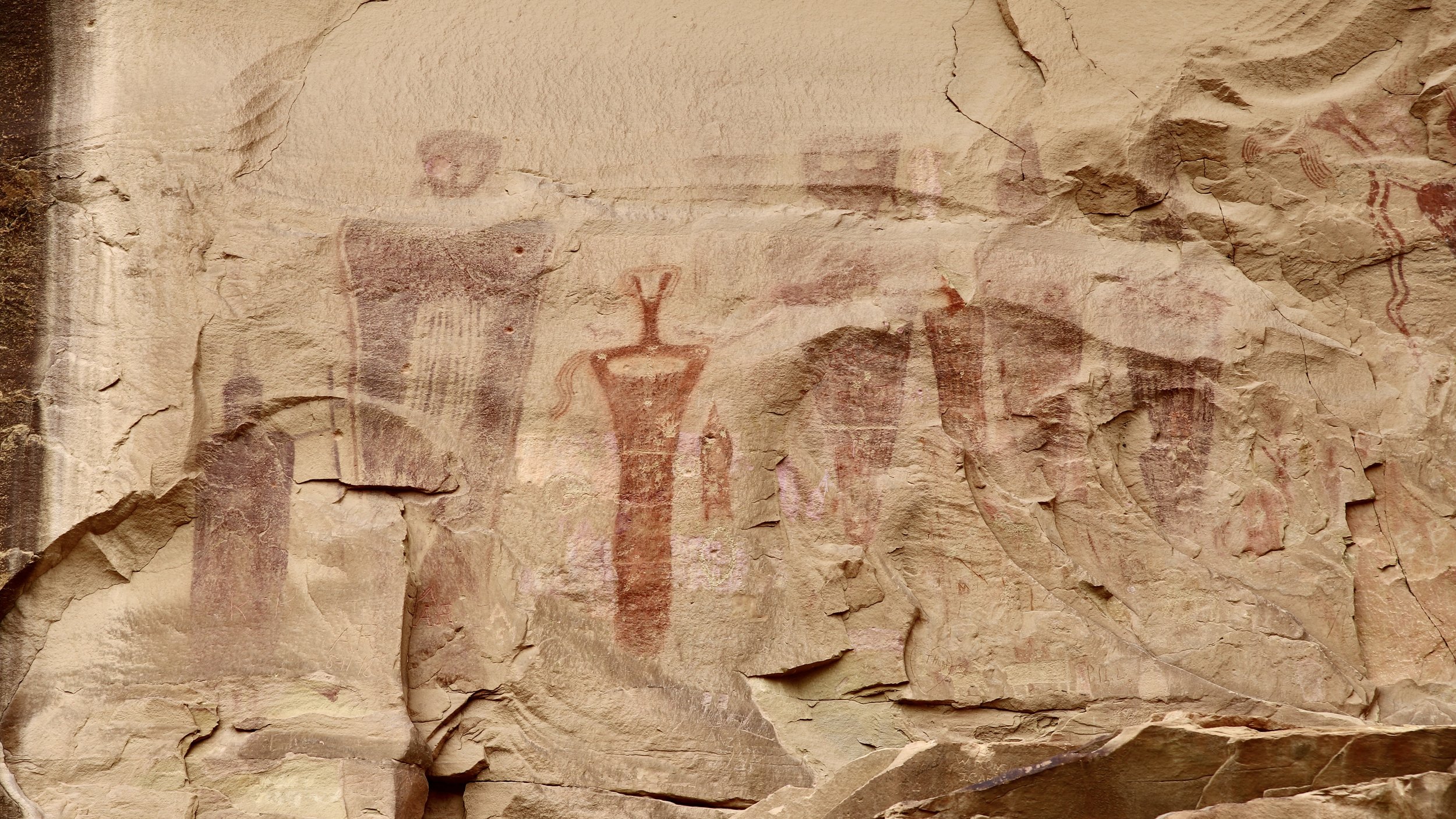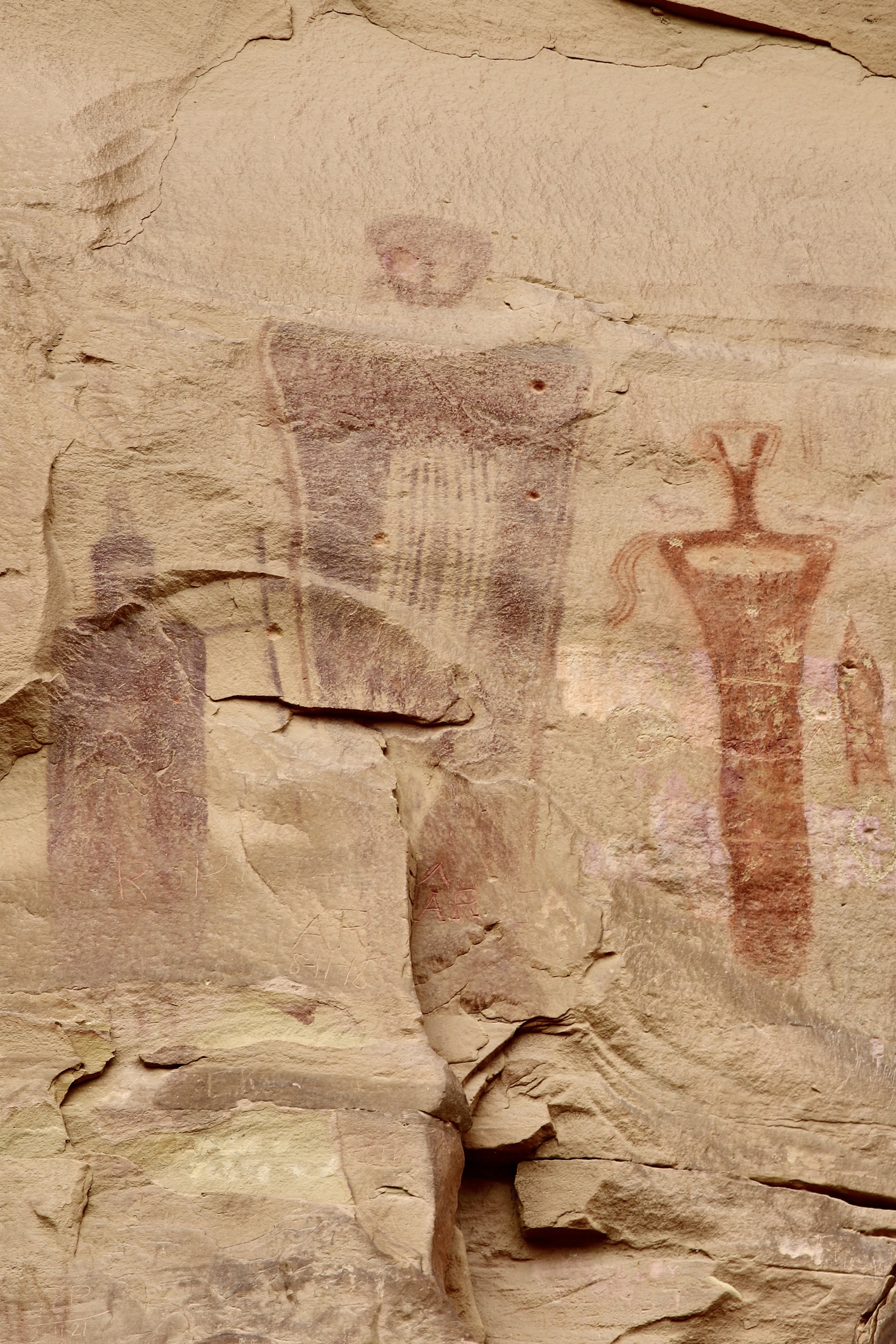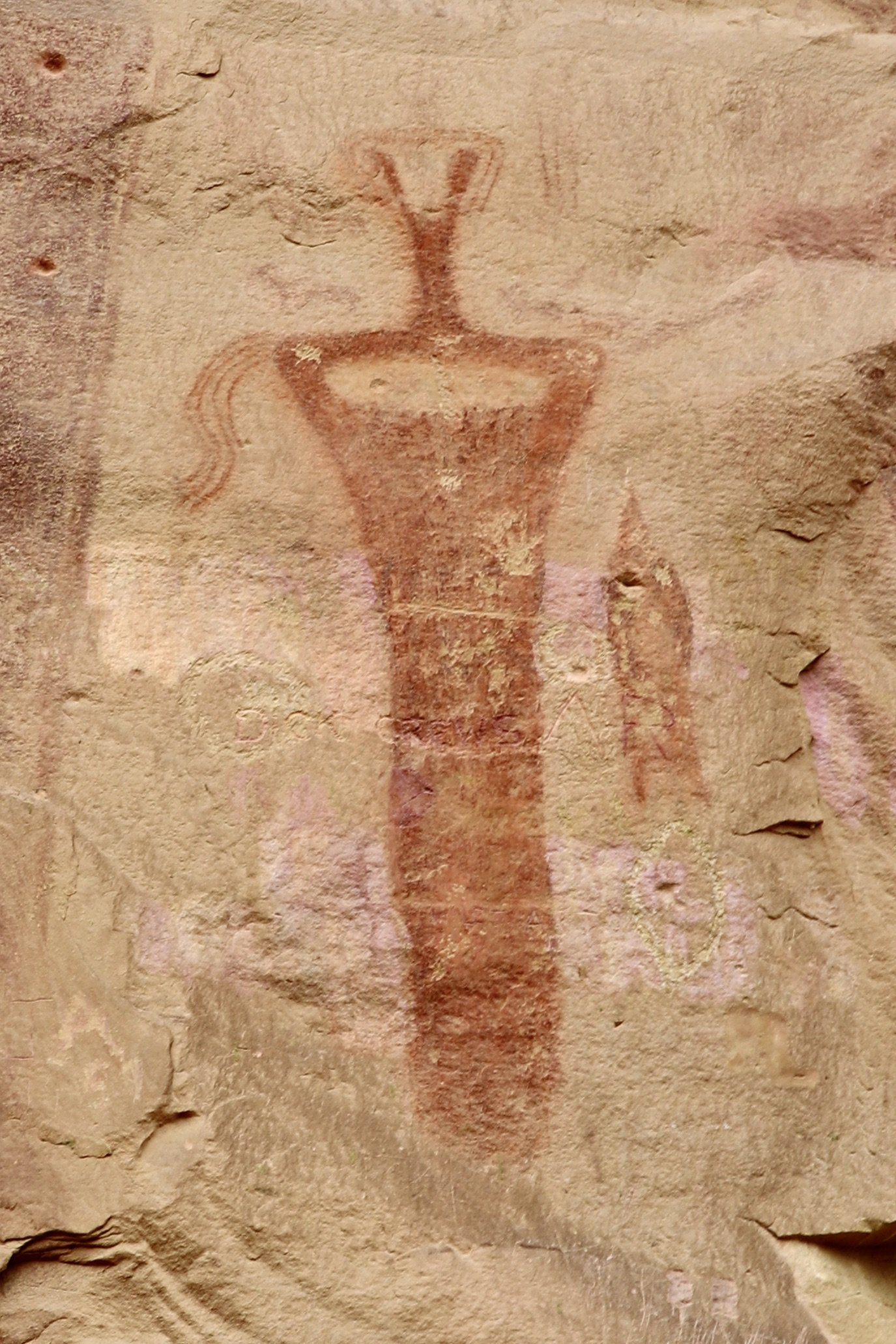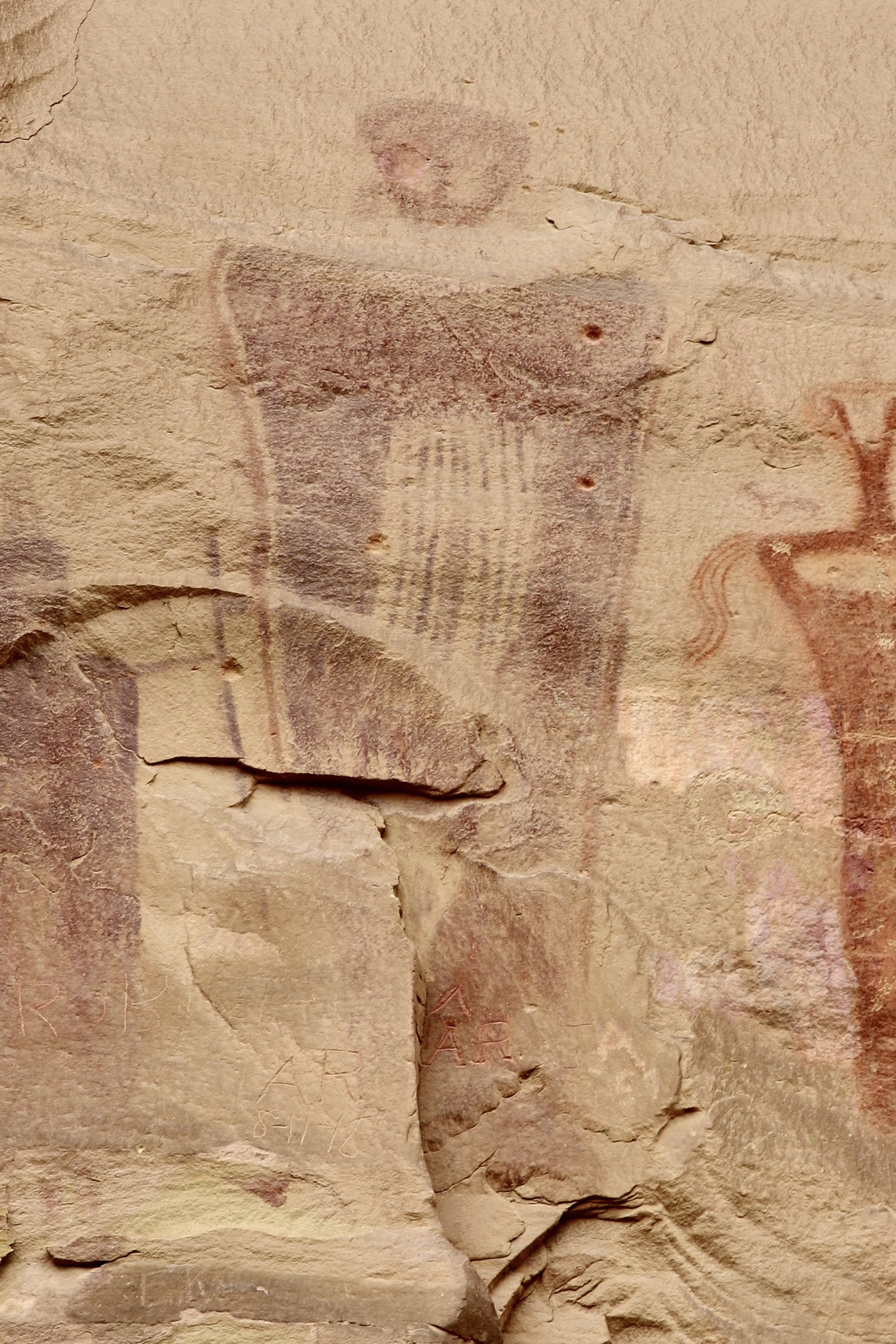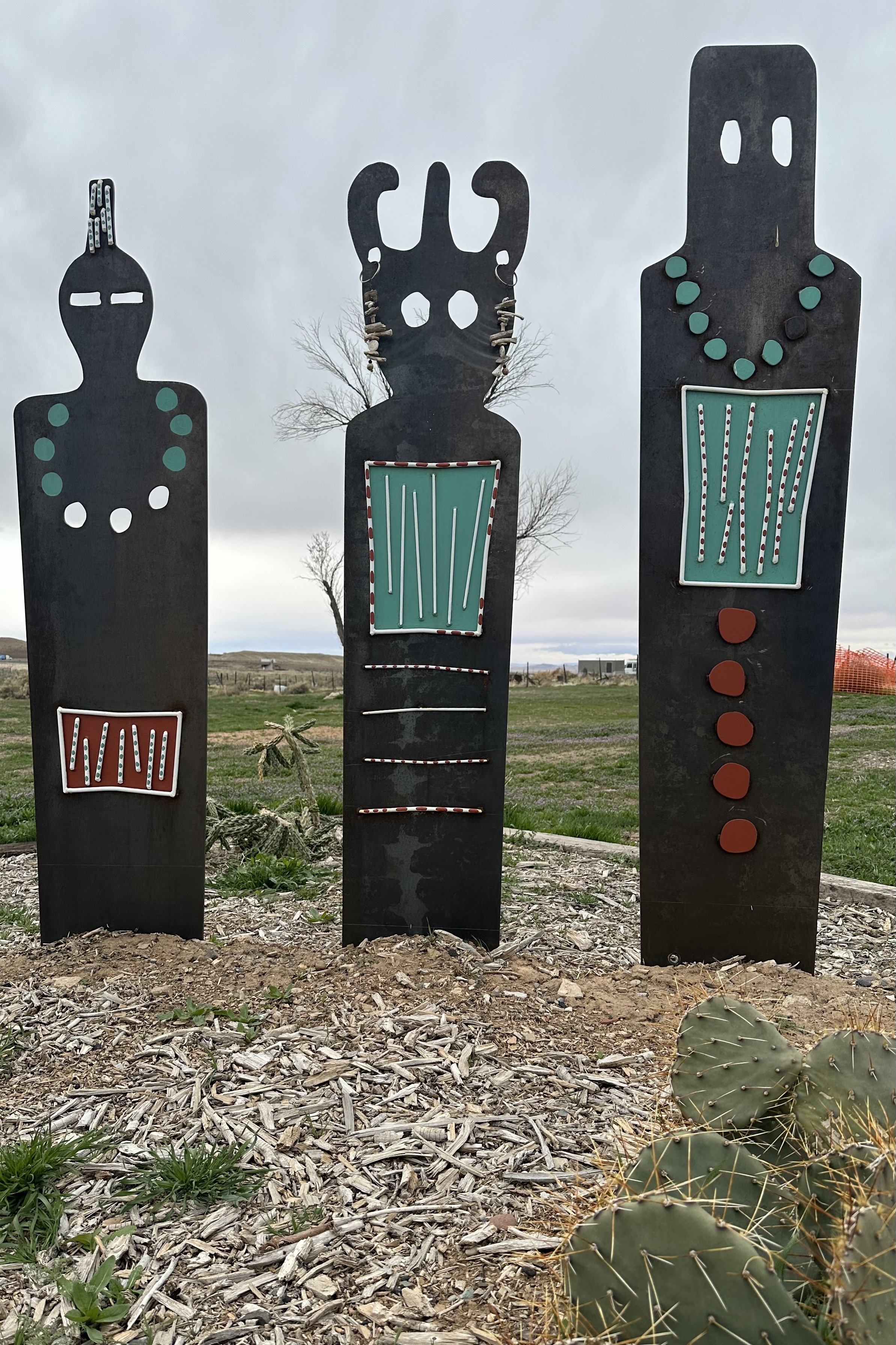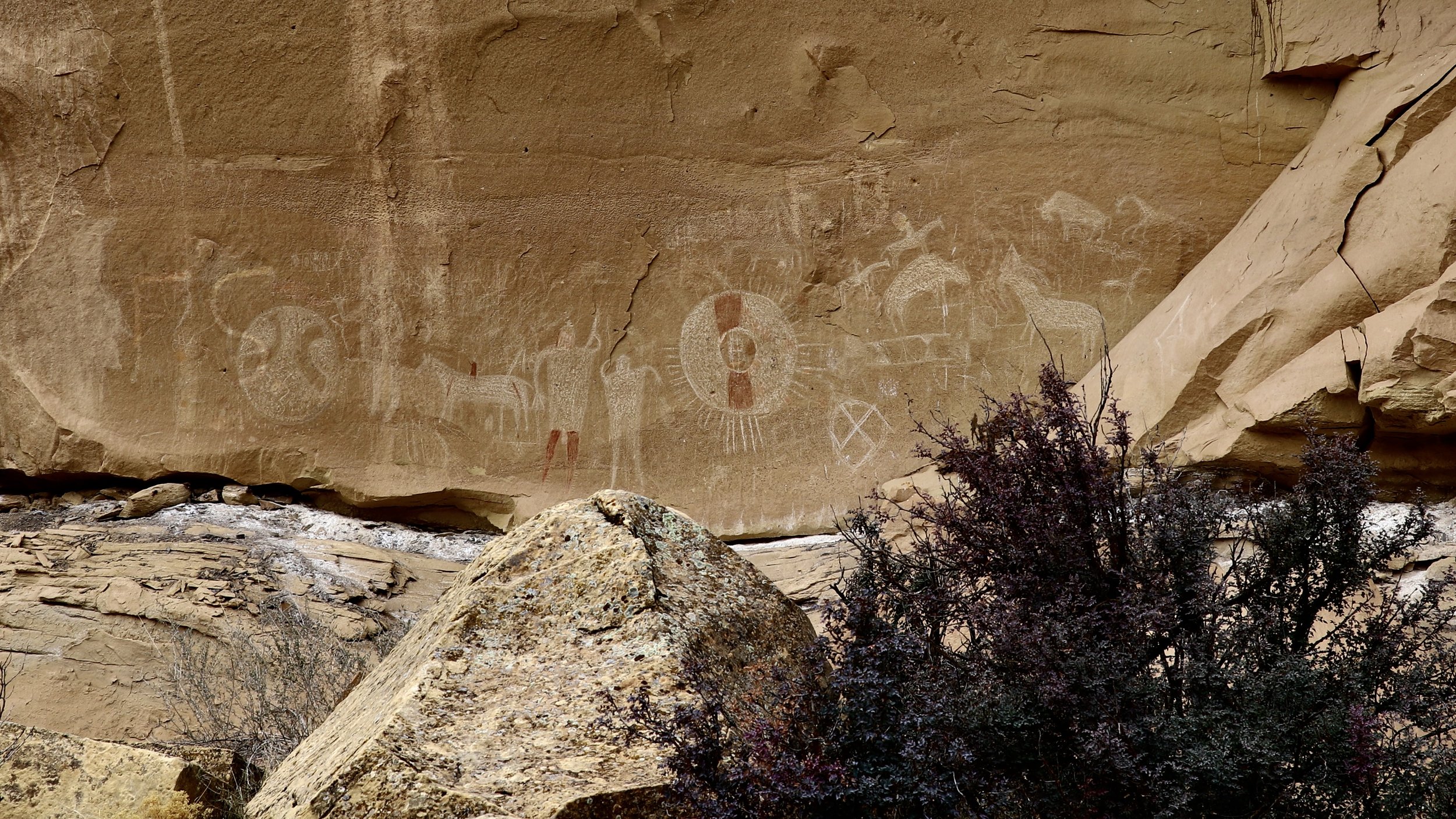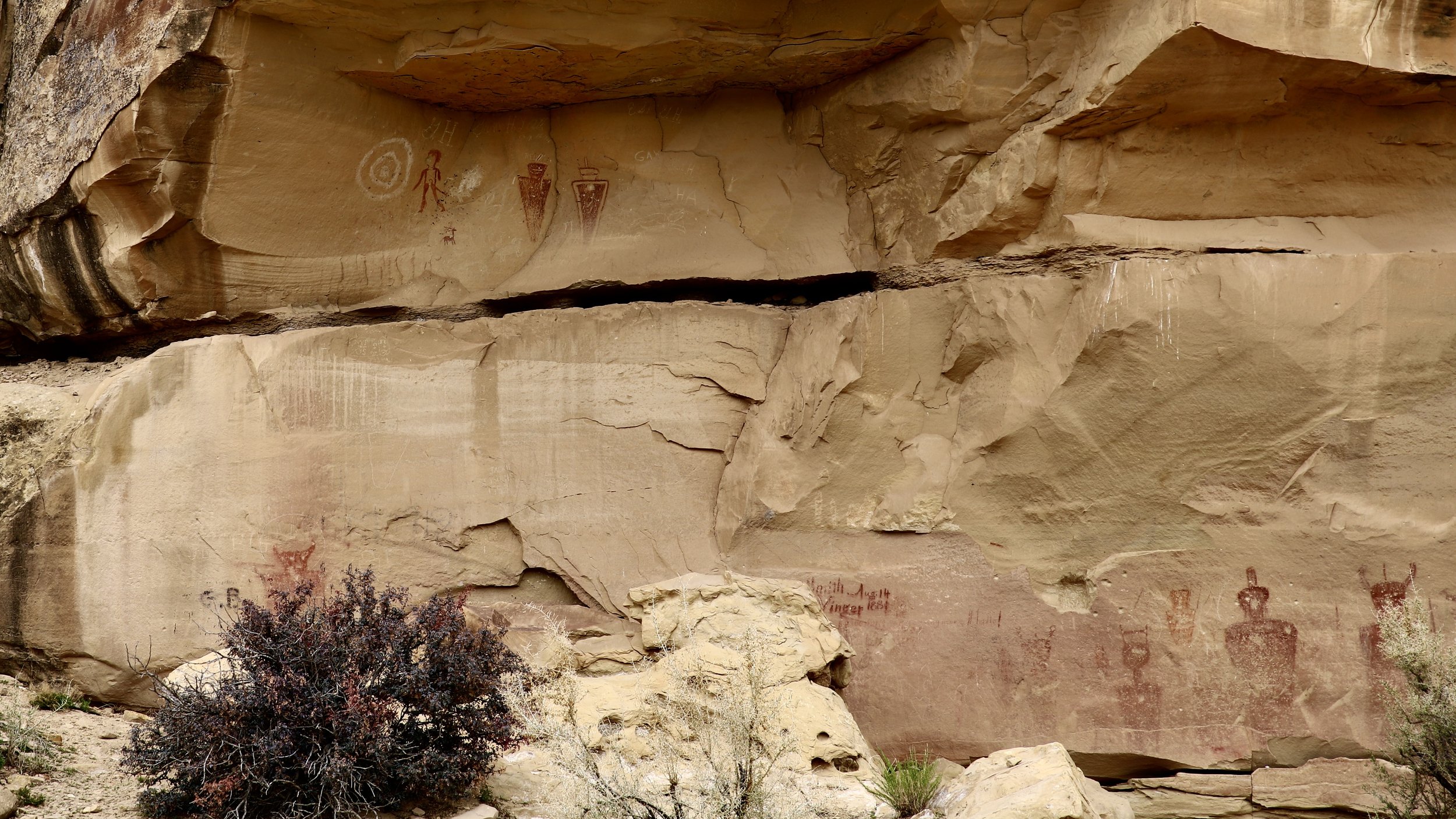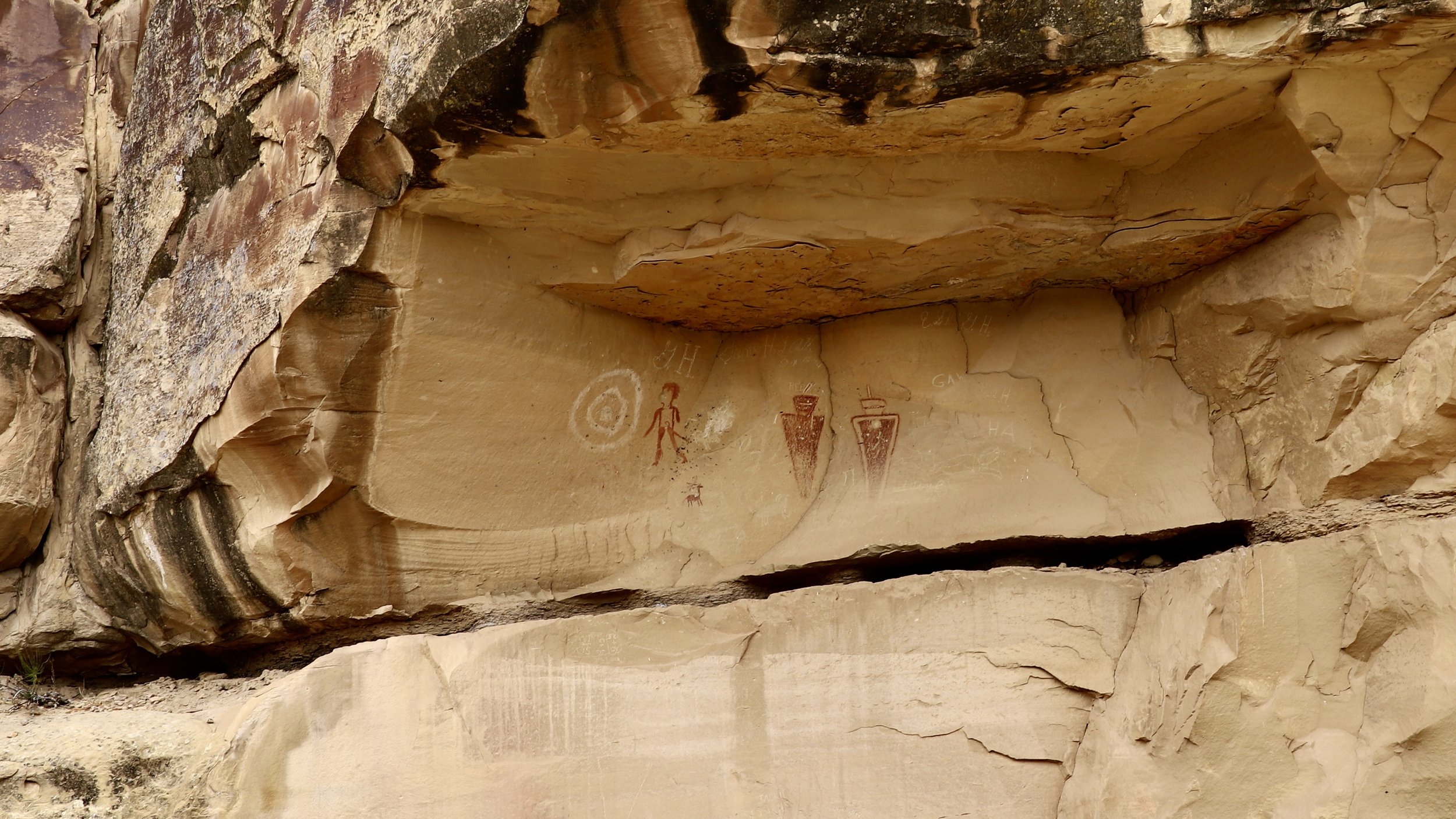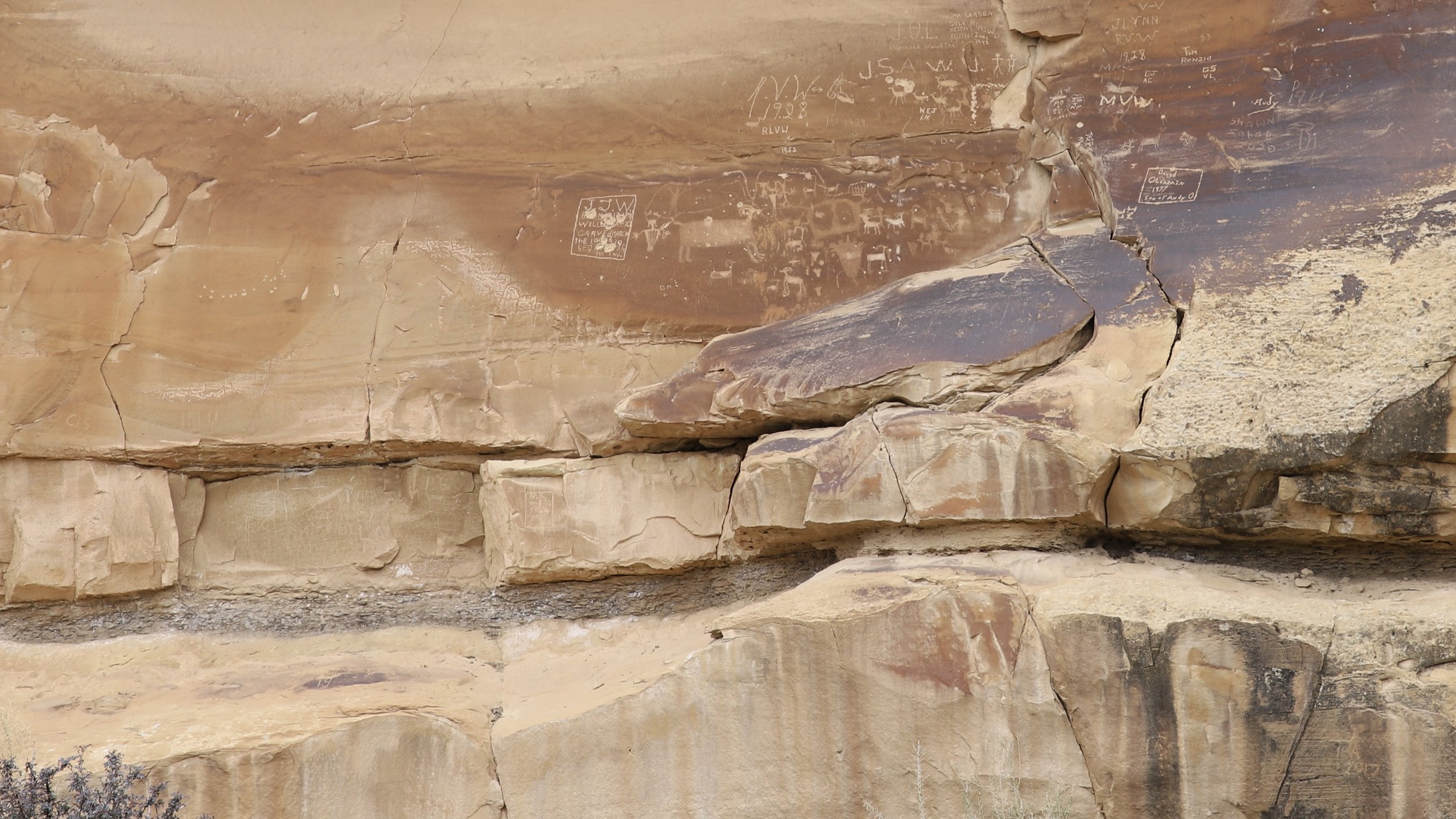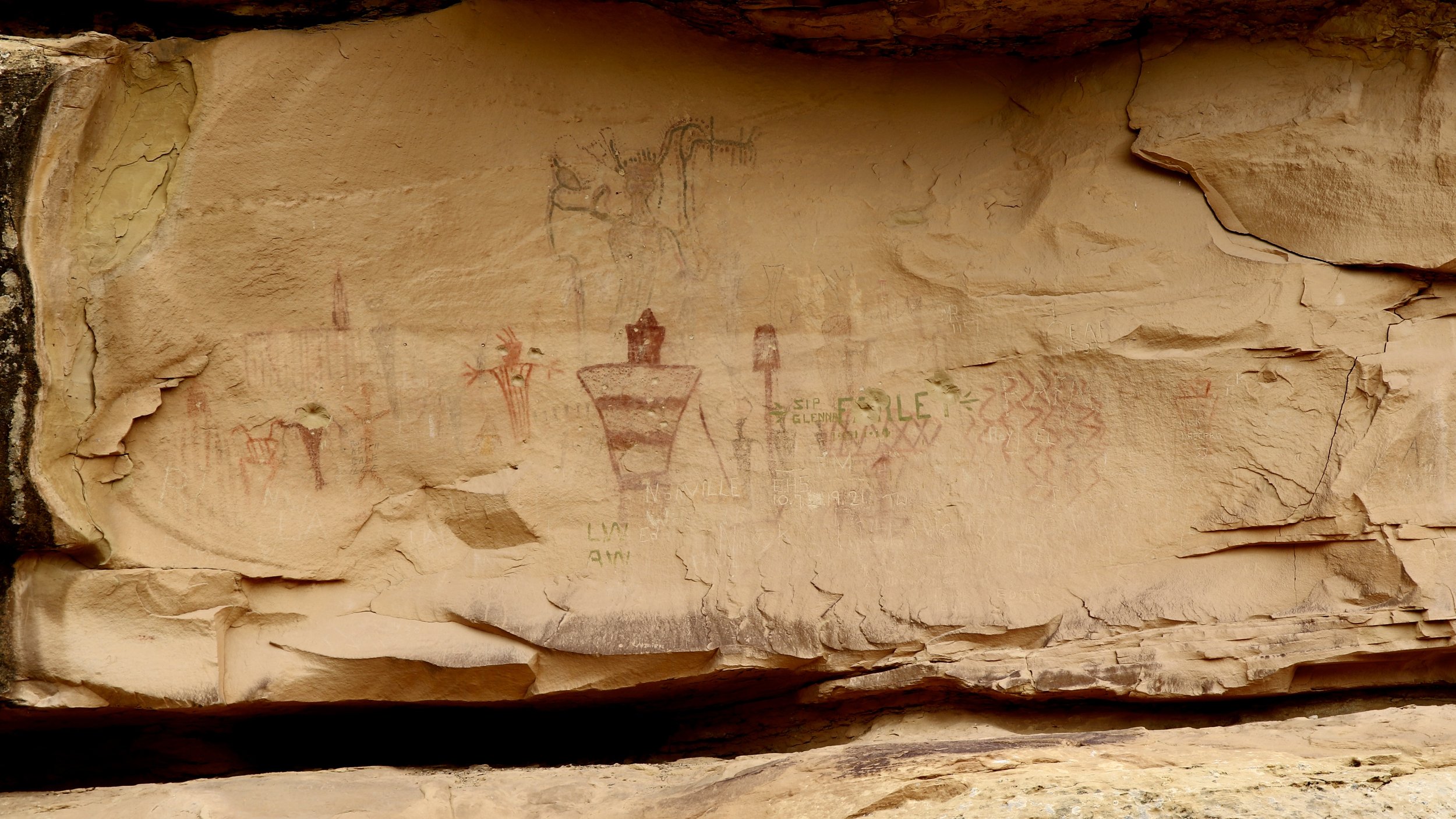
Sego Canyon Rock Art Interpretive Site
Three miles north of the town of Thompson, just off of I-70 in a small sandstone canyon of the Book Cliffs lies the amazing and haunting Sego Canyon Rock Art Interpretive Site aka Thompson Wash Rock Art District. There are three distinct styles of rock art at the site that include Fremont, Ute, and Barrier-style that range in dates from possibly 8000BC to around AD1800.
The older Barrier style is the haunting red ochre pictographs that are drawn onto the wall instead of pecked into the wall like a petroglyph. These Barrier style pictographs are mostly of limbless humanoid figures wearing masks that have huge eyes, antennas, or are in the shape of a skull. It’s hard to call them anything other than alien, really. Some of the figures appear to be holding snakes which is a universal Uto-Aztecan symbol for power. Depending on how the snakes are being held, the figure holding the snakes has either conquered death or has mastered living creatures. Either way, the figure must represent a powerful deity or entity. The bodies may also represent cloud bursts or rain storms in the desert. The tapering way of their figures can certainly seem like a burst of rain falling and disappearing as it hits the surface of the parched desert earth. After all, water is life in the desert.
The Fremont style is from around the Anasazi era of about a thousand years ago. Or from around AD300 to AD1300 to be precise. It shows a hunter, some human figures, geometric designs, and some animals like mountain sheep! Curiously, some of the figures have been pecked over the older Barrier style art.
The Ute panel is no doubt from after the Pueblo Revolt of 1680 since it shows horses. Not many horses made it this far north before then, although it is true that some did. The Ute panel may also contain white men so it’s probably from later than 1800. There are also bison or buffalo and shields.
There are also Humanlike figures across the canyon behind and above the horse corrals. It’s private property but you can still see them through the barbed wire fence. There’s also a target that’s been pecked into the wall for cowboys to practice shooting at. At least it’s better than shooting at the art which was so often the case for the old school bored cowboys who had no ancestral ties to the land or the artworks.
The Site is nestled in the Book Cliffs which run through both Utah and Colorado and is the longest escarpment in the entire United States at over 200 miles long. Sego Canyon is not far from Moab and Arches National Park or Fruita and Colorado National Monument and if you’re interested in American Indian art and the area’s history, it is a must visit. There are also many camping spots located throughout the area.
